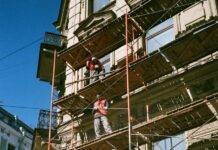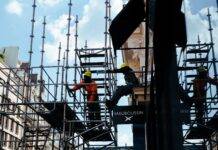
Scaffolding Hazards and Precautions
Introduction
Scaffolding Hazards and Precautions : Scaffolding is a common temporary structure used in construction, maintenance, and renovation projects to provide a safe working platform for workers. While scaffolding is essential, it poses several hazards that can lead to accidents and injuries if not properly managed. This article explores the common hazards associated with scaffolding and outlines precautions to ensure the safety of workers and the success of construction projects.
Scaffolding Hazards:
- Falls from Heights: The primary hazard associated with scaffolding is the risk of falls from elevated platforms, which can result in serious injuries or fatalities.
- Collapse of Scaffolding: Scaffolding can collapse if it is improperly erected, overloaded, or not regularly inspected, leading to catastrophic accidents.
- Instability: Uneven or unstable ground conditions can cause scaffolding to shift or topple over.
- Falling Objects: Tools, materials, or debris dropped from scaffolding can pose a hazard to workers and bystanders below.
- Electrical Hazards: Contact with overhead power lines can result in electrical shocks or electrocution when scaffolding is positioned near them.
- Weather Conditions: Wind, rain, snow, or ice can impact the stability and safety of scaffolding.
- Inadequate Training: Workers who are not properly trained in scaffolding erection, use, and safety procedures are more likely to be involved in accidents.
Precautions to Ensure Safety:
- Competent Personnel: Ensure that only trained and competent individuals are involved in scaffolding activities. Workers should understand the hazards and safe practices.
- Scaffold Design and Inspection: Scaffold design should comply with applicable regulations, and regular inspections must be conducted by competent personnel to identify and address defects or damage.
- Load Limits: Adhere to weight limits specified by the scaffold’s design and the manufacturer. Never overload scaffolding with materials or equipment.
- Fall Protection: Use guardrails, toe boards, and personal fall arrest systems for workers at heights to prevent falls.
- Stable Foundation: Ensure that the scaffold is erected on a stable and level surface and that it is properly supported to prevent tipping or collapse.
- Safe Access: Provide safe access to scaffolding, such as ladders, staircases, or ramps, and ensure that workers use them correctly.
- Regular Maintenance: Keep scaffolding in good condition by conducting routine inspections and promptly repairing or replacing damaged components.
- Weather Monitoring: Continuously monitor weather conditions, and suspend work during adverse weather, such as high winds, snow, or ice.
- Electrical Safety: Maintain safe distances from overhead power lines and conduct a hazard assessment to identify and mitigate electrical risks.
- Tool and Material Management: Secure tools, materials, and equipment to prevent them from falling off scaffolding platforms.
- Training: Provide comprehensive training for all personnel involved in scaffolding work, covering safe erection, usage, dismantling, and hazard recognition.
- Emergency Procedures: Develop and practice emergency response plans for scaffold-related accidents or incidents.
- Documentation: Maintain records of scaffold inspections, worker training, and any modifications or repairs made to the scaffolding structure.
Conclusion
Scaffolding is a critical component of construction and maintenance work, but its use involves inherent risks. Proper training, regular inspections, and strict adherence to safety guidelines are essential for minimizing these hazards and ensuring the safety of workers and the public. Scaffold safety should be a top priority on every job site, as accidents involving scaffolding can have severe consequences. By taking precautions and implementing rigorous safety measures, organizations can create a safer work environment and reduce the likelihood of scaffolding-related incidents.
























